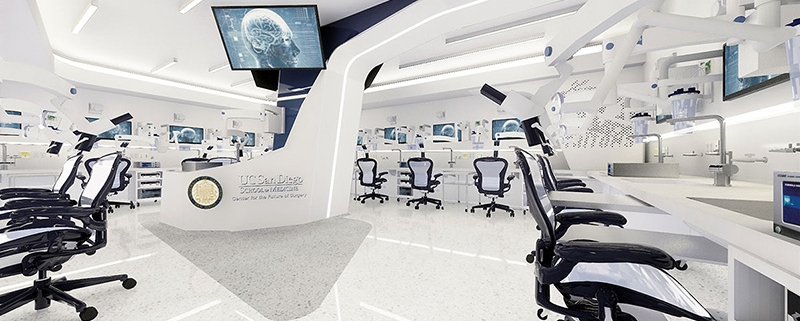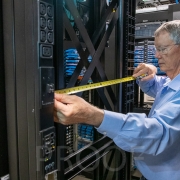Expansion of UCSD’s Center for the Future of Surgery Opens
OneEQ, the medical equipment planning and technology consultancy, working in conjunction with CallisonRTKL, announces that The Center for the Future of Surgery—an advanced surgical training center located on the campus of UC San Diego—opens its doors this weekend. The Center for the Future of Surgery (CFS), established in 2011, has trained more than 20,000 healthcare professionals—from residents and medical students to surgeons, nurses and clinicians—making it one of the largest and most comprehensive surgical training facilities in the world.The CFS celebrates next-generation technology and simulation to help practitioners hone their technical skills, work and communicate across disciplines and share knowledge to push the frontier of surgery—from robotics and micro-surgery to the latest in laparoscopic, endoscopic and cardiothoracic techniques.“In surgery today, technology is evolving, techniques are changing, new devices are coming out all the time,” says Dr. Santiago Horgan, Director of the Center and Chief of the Division of Minimally Invasive Surgery. “There are still many operations that are done open because surgeons don’t have the skills. There is a huge need for simulated training.”The CFS fills that gap.CRTKL architecture provided the facility design and OneEQ provided medical equipment planning services, including the specification and placement of what are considered the leading edge of healthcare technology. The integrated team relied on virtual reality techniques to present design concepts that predict what the operating room of the future will look like: an Integrated Surgical Platform (ISP)In an ISP, manufacturing processes, room design and technologies, not to mention the floor, wall and ceiling materials, have been designed and positioned to improve workflows and achieve new standards of safety and sterility as well as present training opportunities to sharpen the surgeon’s skills. Components are multifunctional to eliminate clutter and improve surgical focus, and the bulwark of medical equipment that can be found in today’s ORs has been more efficiently (and safely) placed in the ceiling for on-demand use—not unlike a theatrical gantry system that clears the stage of clutter and distraction.“Our VR model allowed the client to step into the future,” said Steven Juett, OneEQ planning specialist on the project. “The client, and especially Dr Horgan, pushed us to set a new standard for the surgical environment. That meant rethinking conventional wisdom, techniques and approaches to create something absolutely new and revolutionary.”
“In the end,” says Juett, a specialist in hybrid ORs, “our design integrates extraordinary technology with CFS’ academic mission. Of course it addresses the operational and practical demands of a traditional OR, but everything is focused on the future and where the profession is heading.”
CRTKL designed a micro-surgery suite with 15 workstations, which provides an expanded, state-of-the-art venue for skull-based surgery, vascular surgery, neurosurgery and plastic surgery. Here surgeons (especially those new to the field) can strengthen their hand-eye skills.
OneEQ built in technology that allows the use of real-time intra-operative image guidance to evaluate, intervene and assess the results of minimally invasive procedures, complex minimally invasive procedures, and open surgical cases.
The hybrid operating room contains a multi-axis C-arm, which uses robotic technology to extend imaging capabilities around the operating table. Hybrid ORs allow a multi-disciplinary approach so that surgeons from different specialties can work together to treat multiple medical issues in a single episode of care. This holistic approach is designed to limit additional procedures and ultimately reduce hospital stays and possible complications or infections.
Because this is, at its core, a teaching facility, there is an emphasis on data, and equipment has been specified to unite disparate sources of clinical data to help identify root causes of poor outcomes, target efficiency traps, and provide enhanced training.



